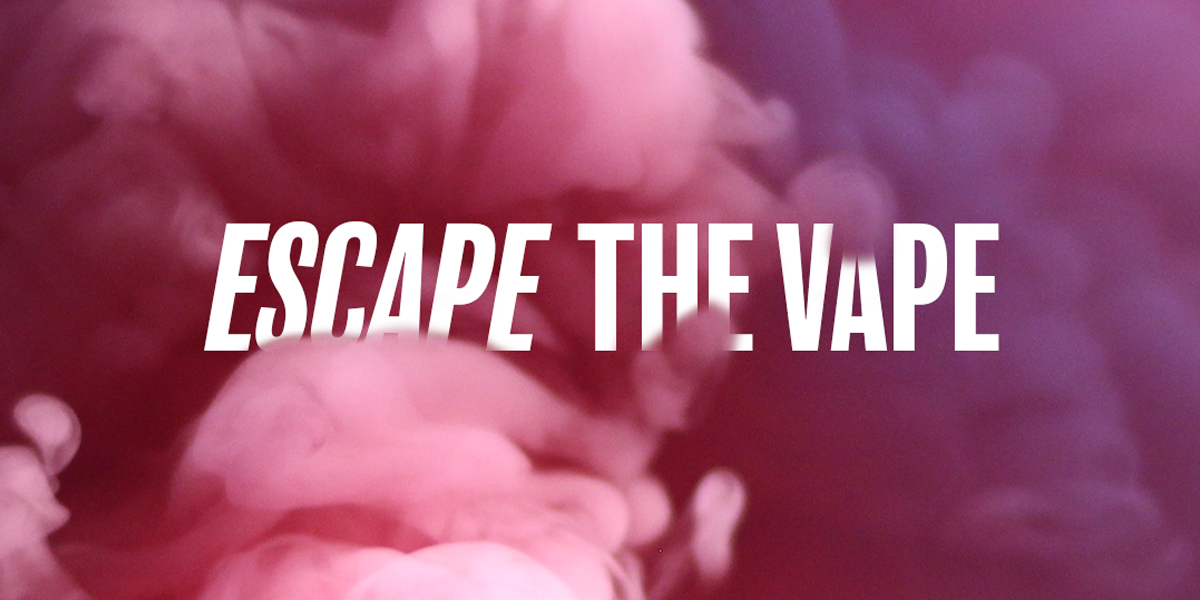They won’t tell you, but we will.

Margot Harris
Campaign Lead
From dosomething.org

Alright, here’s your first truth bomb: Tobacco use in any form, including e-cigs (like JUUL, vape pens, mods, e-hookahs, and tank systems), is not safe, despite what e-cig companies might want you to believe.
You know those shady ways tobacco companies try to sell cigarettes to kids? Plenty of e-cig companies are doing similar things to try and get young people hooked. We know cigarettes are bad, so it’s time to see e-cigs for what they are — a bad remake of regular cigarettes. Here are seven things e-cig companies don’t want you to know.
How about we bring back some stuff we do want instead? We’d gladly take back things like Heelys, Beyblades, and Vine (you know, only lowkey dangerous). Through DoSomething’s The Hit We’ll Take campaign, powered by CVS Health Foundation, share our #TBT guide online with friends to show them the tobacco industry’s tactics we don’t want to bring back — and the throwbacks we do
1. E-cigs like JUUL can contain nicotine, cancer-causing chemicals, metals, and other chemicals found in regular cigarettes.
Yep, e-cigs and vape pens have more health risks for youth users than people realize. And while fruit-flavored e-cigs smell good, more than 8,000 flavor chemicals used in different e-liquids have NOT been tested for use in the lungs.
2. Nicotine is especially addictive for young people, and can increase anxiety levels among young smokers.
Nicotine — which is found in both regular cigarettes and e-cigs — is especially addictive for young people. In fact, the younger a person is when they try nicotine, the greater the risk of addiction. That’s (obviously) bad, because it gets young people hooked (and gets e-cig companies rich). But nicotine causes other problems too. While many people smoke to relax, e-cigs like JUUL actually have the opposite effect. Nicotine dependence can also increase anxiety levels among young users. (As if you and your friends need something else to stress you out.)
3. One JUUL pod contains the same amount of nicotine as an entire pack of 20 cigarettes.
Let me say that again: one JUUL pod contains the same amount of nicotine as an entire pack of cigarettes. Seriously. That’s why JUUL is banned in the European Union — it contains 3 times more nicotine than the legal limit there. The US doesn’t have those same restrictions, but it’s clear these nicotine levels are dangerously high.
THE HIT WE’LL TAKE
LET’S BRING BACK THE STUFF WE ACTUALLY WANT — NOT CIGARETTES.Share The Guide
4. Smoking e-cigs can harm adolescent brain development, which continues into the early to mid-20s.
Research on vaping and JUULing has been scarce…until now. And not to get all gloom-and-doom with scare tactics, but the emerging research is downright scary. Everyone knows cigarettes are terrible for you — we’re now finding out e-cigs are addictive and contain harmful chemicals. Put the two together, and it’s really bad news.
(Plus, hundreds of vaping related lung injuries have been reported across the US, with some that even resulted in death. From emerging research, the culprit in most cases seems to be illicit THC vape cartridges that contain cheap thinners in their e-liquid.)
5. Some e-cigs like JUUL were designed intentionally to not look like regular cigarettes, and instead resemble everyday items like USB drives, pens and markers.
You know those shady tactics the tobacco industry uses to get try and get young people hooked? The government launched an investigation of JUUL and determined that the company was making claims to safety that it couldn’t entirely back up and marketing specifically towards young people. E-cigs and JUUL are supposedly intended to be a less-toxic alternative for adults struggling to kick their regular cigarette habit. But digging deeper into marketing, it’s clear e-cig companies are using any means necessary to get young, non-smokers started and hooked.
This is what’s called “predatory marketing” — in other words, when companies intentionally market harmful products to specific groups. In this case, vape and e-cig companies like JUUL use predatory marketing to try and get young people hooked.
6. Flavored regular cigarettes are banned because they get young people addicted. But many flavored e-cigs are still on the market.
The FDA has already banned cigarettes with certain kid-appealing flavors and is examining options for regulating other flavored tobacco products, including menthol cigarettes, because of their effects on kids and teenagers. The FDA has taken action involving 17 companies that have designed products with packaging that could appeal to children.
According to the FDA, makers of e-cigarette and vaping liquids like One Mad Hit Juice Box, V’Nilla Cookies & Milk, Unicorn Cakes and other products have stopped selling them, but they’ve only scratched the surface. There are more than 15,000 flavored e-cig products, and flavors are one of the main reasons young e-cig users say they use e-cig products.
7. E-cigarette aerosol is NOT harmless “water vapor.”
While many young people think e-cig products only contain water vapor, recent research shows that e-cig aerosol (including JUUL) isn’t just harmless “water vapor.” E-cig aerosol can contain nicotine, cancer-causing chemicals, and heavy metals. It is difficult for consumers to know what e-cigarette products contain. For example, some e-cigarettes that are marketed as containing zero percent nicotine have been found to contain nicotine.
DoSomething.org is the largest not-for-profit exclusively for young people and social change. Our digital platform is activating 6 million young people (and counting!) to create offline impact in every US area code and in 131 countries.
